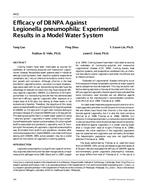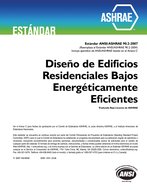Description
Cooling towers have been implicated as sources for outbreaks of community-acquired and nosocomial Legion-naires’ disease. Nonpotable water systems used in industrial settings (cooling towers, heat -rejection systems, evaporative condensers, etc.) rely on chemical biocides to control micro-bial growth and corrosion. Although chlorine is the best biocide for Legionella control, corrosion is a major disadvantage associated with its use. Nonoxidizing biocides have the advantage of reduced corrosion but may have marginal efficacy against Legionella. DBNPA (2,2-dibromo-3-nitrilopro-pionamide) is a nonoxidizing biocide that has demonstrated short-term efficacy against Legionella after exposure to a single dose of 8-19 ppm, but dosing at these levels is not economically feasible. Therefore, the objective of this study was to compare the efficacy of 5.0 ppm and 15.0 ppm slug doses of DBNPA vs. 5.0 ppm and 1.0 ppm with multiple dosing to achieve a residual of 1.0 ppm of DBNPA over a 16-day period. This testing was performed in a model water system (1) using “naturally grown” Legionella in water containing a consortium of heterotrophic bacteria and amoebae, (2) culturing both biofilm-associated and planktonic Legionella, and (3) monitoring for the recovery of Legionella. Legionella pneumophila was eliminated from biofilm and planktonic samples after continuous exposure to 1.0 ppm DBNPA. Low-level continuous dosing with DBNPA (98% active powder) may be a viable option for the control of Legionella in cooling systems.
Units: SI
Citation: ASHRAE Transactions, vol. 107, pt. 1
Product Details
- Published:
- 2001
- Number of Pages:
- 7
- File Size:
- 1 file , 940 KB
- Product Code(s):
- D-7128




